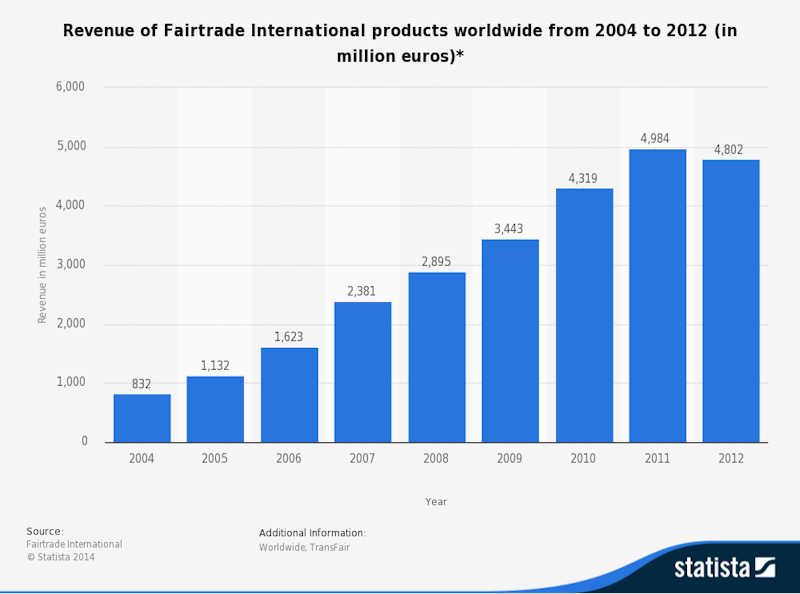Study Notes
Fair Trade and Development
- Level:
- A-Level
- Board:
- AQA, Edexcel, OCR, IB
Last updated 9 Apr 2023
The Fair Trade movement covers over 650 producer organisations in more than 60 countries
One of the driving forces behind Fair Trade was a desire to correct for market failures in industries for many primary sector commodities. These included the effects of monopsony power among transnational food processors and food manufacturers that often led to farmers in some of the world's poorest countries receiving an inequitably low and unsustainable price for their products.
Sales of fair-trade labels have risen from an estimated Euro 830m in 2004 to Euro 4.9bn in 2011
The Fair Trade Foundation web site explains fair trade as follows:
"Fairtrade is about better prices, decent working conditions, local sustainability, and fair terms of trade for farmers and workers in the developing world. By requiring companies to pay sustainable prices (which must never fall lower than the market price), Fairtrade addresses the injustices of conventional trade, which traditionally discriminates against the poorest, weakest producers. It enables them to improve their position and have more control over their lives."
Key aims of Fair Trade
- Guarantee a higher / premium price to certified producers
- Achieve greater price stability for growers
- Improve production standards. A grower will be able to receive a Fair Trade licence if it can improve working conditions, better pay and guarantees of environmental sustainability
- A premium price can be offered - for direct investment in improving businesses and communities

Criticisms of Fair Trade
- Impact on non-participating farmers: Some claim that by encouraging consumers to buy their products from Fairtrade sources, this cuts demand and revenues for farmers in poorer nations not covered by the Fairtrade label thereby worsening the risk of extreme poverty
- Who captures the gains (producer surplus) from Fair-Trade coffee? There is some evidence that a large part of the premium price goes to processors and distributors rather than the farmers themselves.
- The fundamental causes of poverty are not addressed by Fairtrade. Greater investment needs to be made in raising farm productivity, reducing vulnerability to climate change, and reaching multi-lateral trade agreements between countries to reduce import tariffs and improve access for poor countries into the markets of rich advanced nations. Other investment might be better targeted at encouraging farmers to establish producer co-operatives of their own and create their own branded products selling direct to consumers.
- Some free market think-tanks believe that the fair trade movement has resulted for example in excess production of coffee, which has driven down world coffee prices.
- Many producers certified to use the fair trade label come from richer more diversified advanced and middle income countries rather than poorer one
You might also like
ASEAN
Study Notes
UK & the European Union
Topic Videos

Causes and Effects of China's Growth Slowdown - Views from Economists
27th November 2015

Why Can’t Economists Sell Free Trade?
28th May 2017

EU agrees biggest free trade deal with Japan
10th December 2017
African Free Trade Agreement (Chain of Analysis)
Practice Exam Questions
Welfare Loss - Applying The Concept in Exams
Topic Videos
IB Economics - Consumer and Producer Surplus
Study Notes